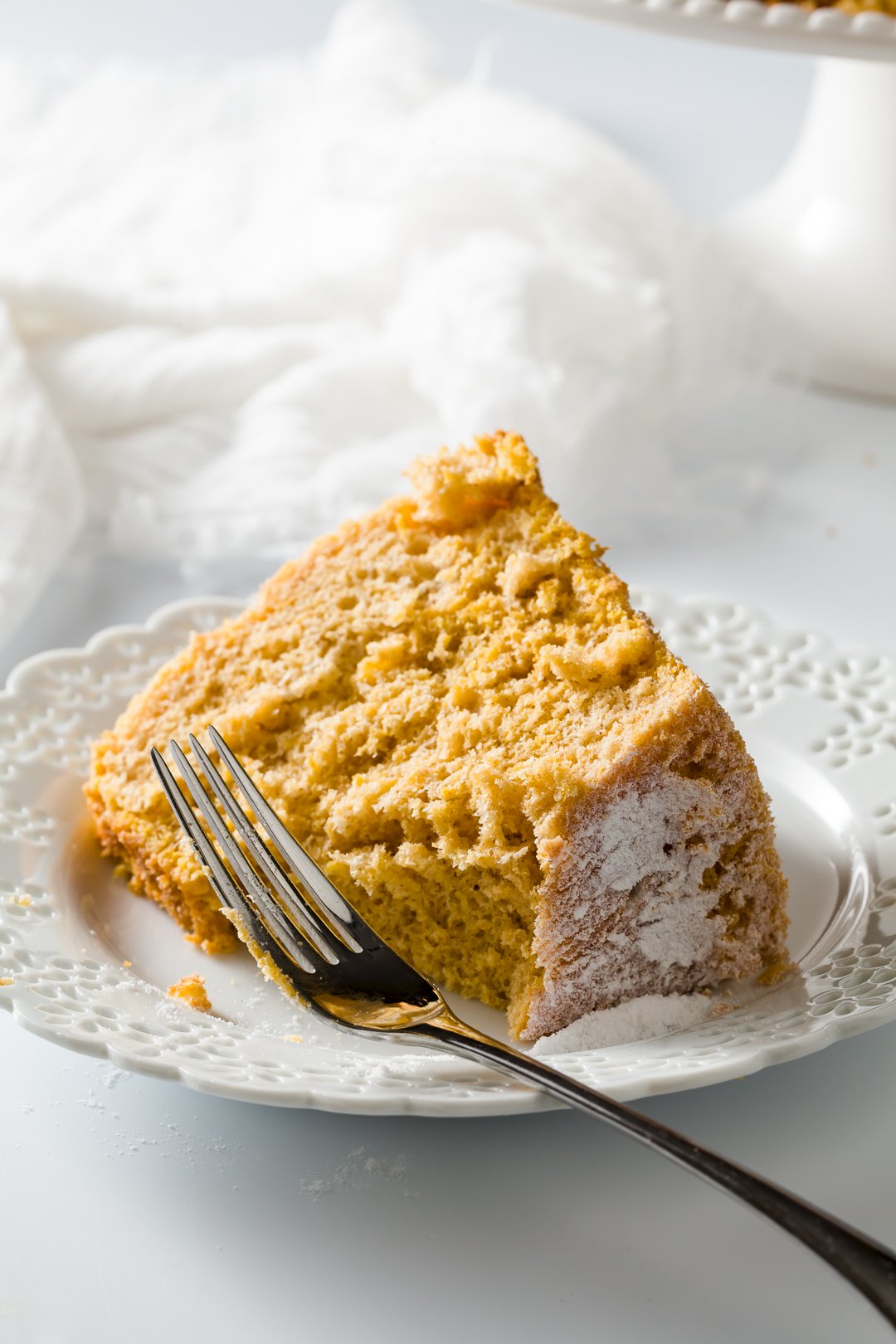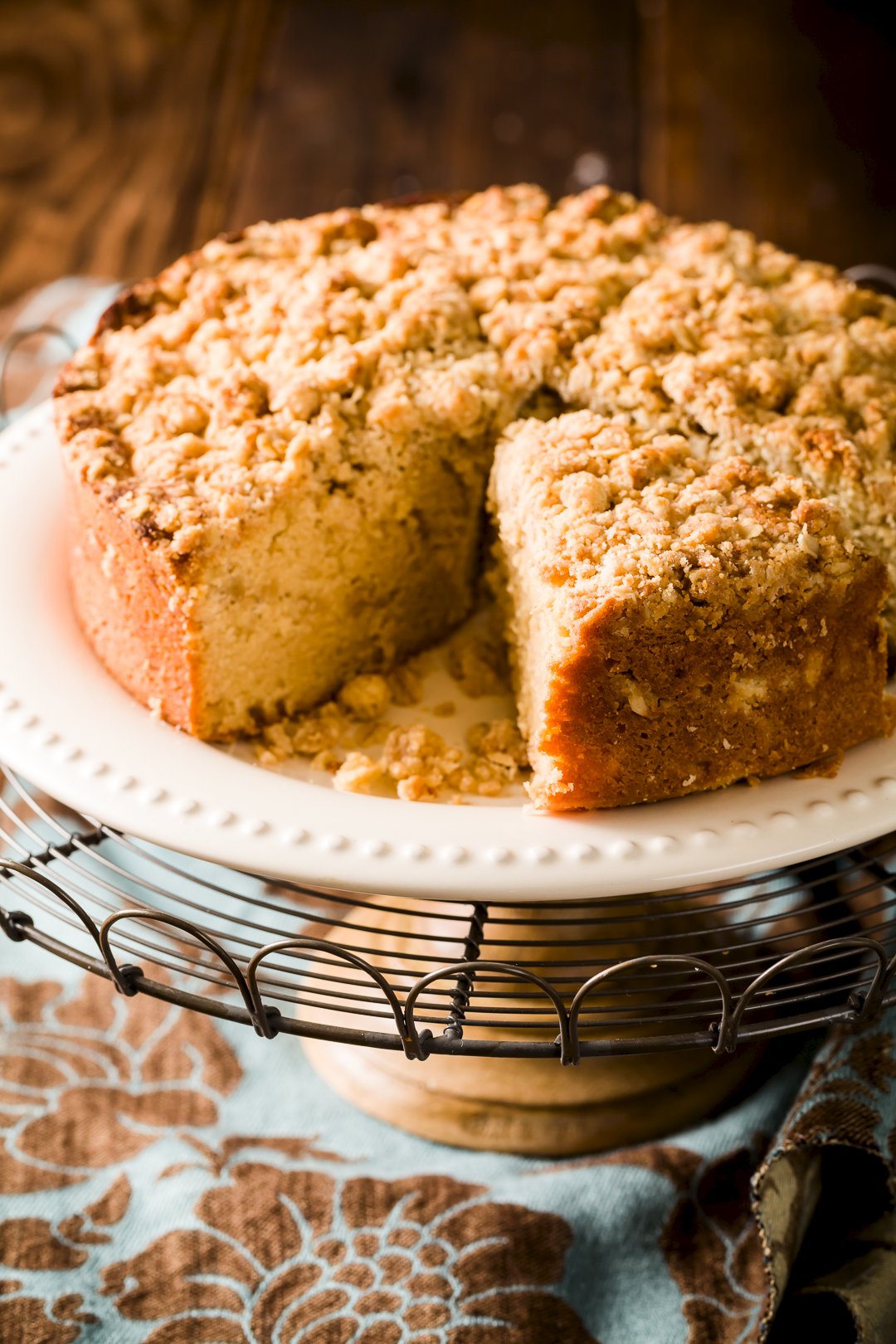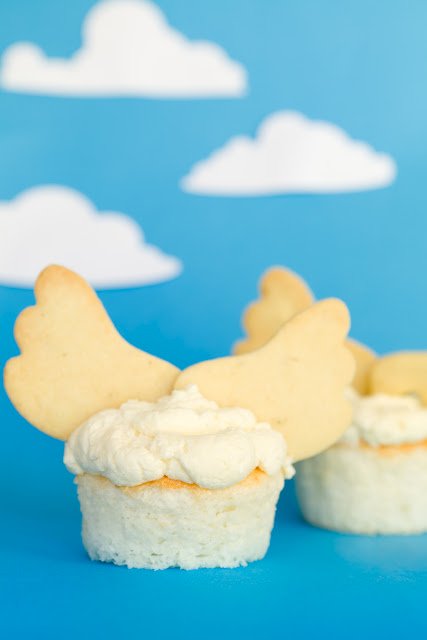The Differences Between Chiffon Cake and Angel Food Cake
Chiffon cake is similar to angel food cake in a number of ways. Both chiffon cake and angel food cake rely on stiffly beaten egg whites for leavening, and both have an airy texture. Chiffon cake is often baked in an angel food cake tin and inverted during cooling to preserve the full height of its rise. This means that before they are sliced into, the cakes look practically identical.
How are Chiffon Cakes Different From Angel Food Cakes?
Despite their similar appearance, the cakes are more different than similar. Here are some key differences between chiffon and angel food.
- Chiffon cake contains fat, while angel food cake does not. While angel food cake is mostly sugar and air, chiffon cake contains egg yolks and oil.
- Chiffon cake uses fewer eggs than angel food cake. Neither cake jokes around when it comes to the products of our chicken friends, but angel food cake requires a whopping thirteen eggs (as opposed to six or seven) and will eat up more than a carton.
- Chiffon cake is sturdier and more versatile than angel food cake. Because chiffon cake contains a chemical leavening agent, it can be made with a wider variety of wet ingredients and add-ins, like fruit juice or chopped nuts. It can also be baked in a variety of straight-sided pans (not only the tubular pan that angel food requires).
- Chiffon cake can be served with a wider variety of fillings, icings, and glazes. Angel food cake is too light and spongy to support much in the way of toppings and too sweet for most icings. I’ve only seen it served with whipped cream and fresh fruit. While chiffon cake doesn’t strictly need a topping, either, it supports a wider array of icings.
- Chiffon cake has a richer flavor and, while still airy, a crumbier texture than angel food cake. Angel food cake is the foamiest foam cake around, with little flavor beyond a general sweetness. The fat in chiffon cake gives it more depth, and it is more likely to pack a punch with its flavors. While classic chiffon cake flavors include chocolate and citrus, today’s bakers give it all sorts of unusual flavor twists. (Take a look at Susanne Ng’s black sesame Pusheen Cat chiffon cake!)
Foam Cake vs. Butter Cake

My sour cream coffee cake is an example of a butter cake. It’s heavier, uses butter, and baking soda.
Cakes are divided into two main families depending on how they rise: foam and butter.
Foam cakes are composed of flour, sugar, eggs, and flavoring. They contain no chemical leavening agents.
Instead, their airy texture is achieved by whipping air into egg whites, then carefully folding the fluffy egg mixture through the main batter.
Butter cakes contain flour, sugar, eggs, flavoring, a chemical leavening agent, and a significant amount of butter or shortening.
Their rich ingredient list generally makes butter cakes denser and more substantial than their foam counterparts.
There’s plenty of wiggle room within each cake category.
A foam cake can be made completely fat-free if egg yolks are excluded, or it can be further enriched with butter. (Cake can contain butter without being a butter cake, so long as it doesn’t also contain baking powder or soda.)
Butter cakes, on the other hand, range from rich and crumbly pound cake to dense fruit cakes. Their more robust structure enables them to accommodate wet and heavy mix-ins like carrot, fresh fruit, and nuts.
What is a Chiffon Cake?

Chiffon cake holds a unique place on the cake spectrum, for chiffon cakes are essentially a hybrid of butter and foam. They were developed as a variation on chiffon pie.
Joy of Baking defines chiffon cake as:
A moist and tender, light and airy cake that has the richness of a butter cake but the springy texture of a sponge cake. Similar to a butter cake in preparation and formula (although oil is used instead of butter), it relies on the whipped egg whites for its leavening, along with baking powder…
Chiffon cake is a real anomaly, using both methods of leavening and containing fat from egg yolks and oil. In fact, when General Mills published its first chiffon recipes in the 1940s, the dessert was touted as “the first new cake in 100 years.” Marketers emphasized the novelty of substituting oil for butter in the cake, but it was the use of both chemical leavening agent and whipped egg whites that was truly revolutionary, for it bridged the butter/foam divide.
What is Angel Food Cake?

Angel food cake (or angel food cupcakes) are light and airy from whipping egg whites.
Where does angel food cake fit into all of this, and how does it differ from chiffon cake?
If chiffon is a butter/foam hybrid, angel food is as foamy as they come.
It contains only stiffly beaten egg whites, cream of tartar (mixed with the egg whites to help stabilize them and prevent discoloration), sugar, flour, salt, and flavoring.
With no egg yolks, butter, or oil, angel food cake is virtuously fat-free – but it is also meringue-sweet. Angel food cake has the highest sugar content of all the sponge cakes. This high sugar content is necessary to support and stabilize the whipped egg whites that give the cake its light texture.
The delicate structure of angel food cake, a true foam cake dependent entirely on the air beaten into its egg whites, makes it fairly high-maintenance. Great care must be taken not to knock out the air during the baking and cooling process.

An example of an angel food tin [paid link]
This means that angel food cake must baked in a tubular, straight-sided tin (no patterned bundt pans – they have too many crevices for the fragile structure of the batter).
The use of standard cake or loaf pans will result in a deflated cake, for it must also be inverted while it cools to prevent deflation. The cake should be allowed to cool completely before any attempt is made to separate it from the tin.
Which Cake is Better?
That’s all well and good, but which cake is better? Which should you bake for that upcoming baby shower, or for a holiday get-together? That’s a personal preference, but I like my fat (and my more complex flavors).
Ready to make your own comparison? Try these recipes:
Loading comments...